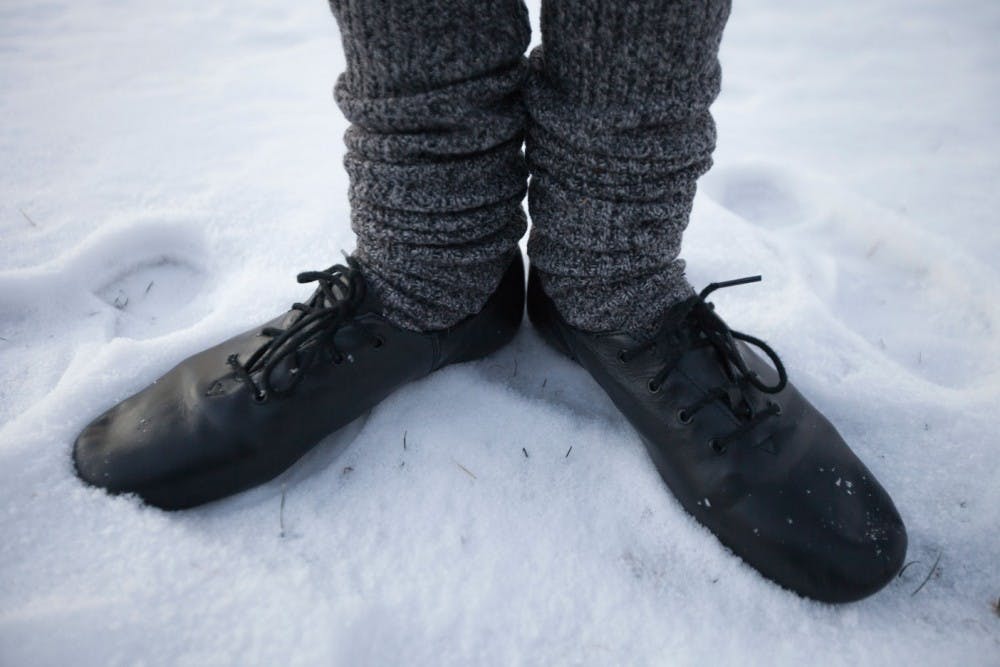During the winter dance students accommodate in order to be able to perform in class to the best of their abilities.
Some students worry about getting to their lectures when the weather is frightful, but dance students and professors’ anxieties about the weather don’t stop when they get to class.
Cold weather puts pressure on dancers’ bodies by straining their muscles and forces the School of Dance, its faculty and students to take proper precautions during Athens’ winter months. The average high temperature here in January is 39 degrees, according to USclimatedata.com.
Classrooms must be a comfortable temperature and give students enough room to dance, said Madeleine Scott, director of the School of Dance.
The National Association of Schools of Dance requires schools to provide at least 100 square feet per dancer.
Scott canceled her yoga classes in Lincoln Hall at the beginning of the school year because of an air conditioner that blew cold air on her students.
“In my time of teaching we’ve had many periods where the heating situation is not optimum,” Scott said. “This year was one of them. I wouldn’t normally cancel a dance class but I had to cancel yoga. People who haven’t studied movement for a long time don’t know how to keep themselves warm even if they’re not moving so much.”
Putnam Hall, where the School of Dance is housed, is susceptible to cold air leaking in due to unfitted windows, said Debbie McAdoo, assistant to the director of dance. Putnam, which is almost 90 years old, was last renovated in 2004.
The school sometimes uses space heaters when the temperature drops, most recently when it went below 62 degrees, McAdoo said.
But space heaters can’t be used during a dance class, Scott said.
“Generally speaking, space heaters are not a great thing to have because they’re so vulnerable to being knocked over,” she said. “The old space heaters would be ridiculous and of course the university doesn’t want you to use those heaters unless they’re approved ones that they bring over.”
Jeff Russell, director of the SHAPe Clinic, which evaluates and treats injured performers, said repetitive-use injuries are common year-round, but are more common when the cold puts an additional strain on muscles.
Muscular injuries also can have symptoms aggravated by winter weather.
“I see myself having a better attitude toward my dancing and better improvement when it’s in between fall and spring,” said Antoinette Brown, a sophomore studying dance. “When I’m really cold I feel stiff and in the summer sometimes I get so hot that my head mentally can’t take it anymore.”
The SHAPe clinic tends to treat muscular injuries with worse symptoms when it’s cold.
Another tactic dancers use to stay warm?
Bundle up.
“When it comes to actually being in our building, and in our studios, and teaching class during the winter months what I do is I allow them to wear cover ups, extra T-shirts, extra sweatshirts and extra layers of dance pants,” said Travis Gatling, associate director for the school. “And that way as they start to warm up they can peel the layers off.
“We encourage (students) after class that they cool down appropriately and dry off before they go out into the cold.”
@annachristine38
ag836912@ohio.edu






